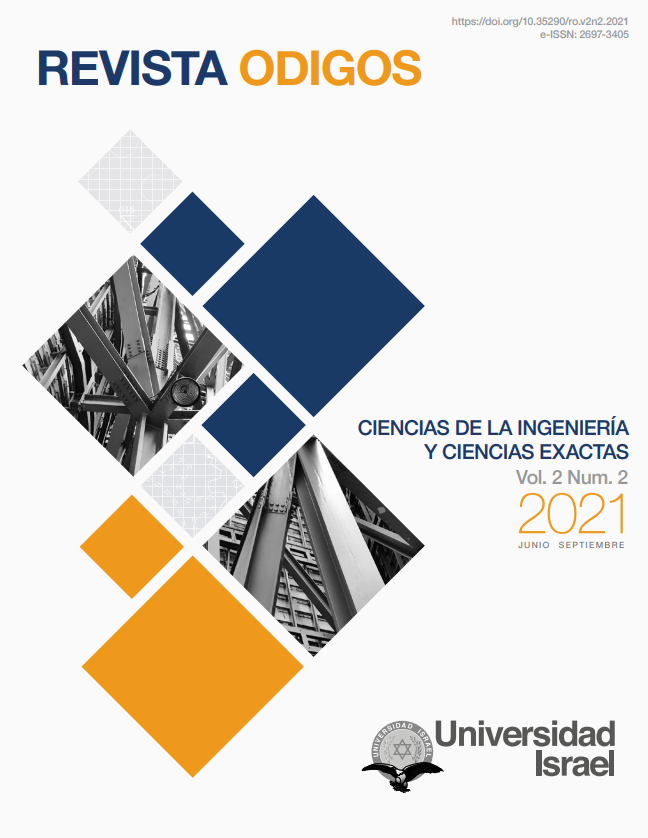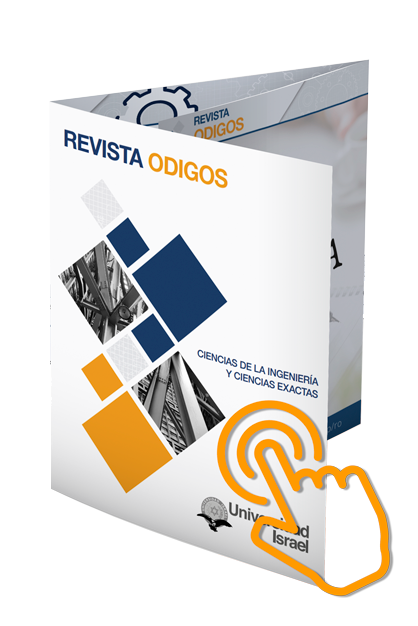App móvil para el registro de sismos en Ecuador mediante la geolocalización
DOI:
https://doi.org/10.35290/ro.v2n2.2021.413Palabras clave:
sismo, instituto geofísico, desarrollo móvil, geolocalizaciónResumen
El Instituto Geofísico de la Escuela Politécnica Nacional menciona que el Ecuador está cerca de la zona donde convergen las placas Nazca y Sudamericana, lo que determina una importante actividad sísmica. Este trabajo investigativo describe la creación de una aplicación móvil que como resultado agiliza el registro de haber sentido el movimiento telúrico tomando la ubicación exacta mediante geolocalización, además de datos relevantes como fecha, hora y qué tan fuerte se sintió el sismo. Para llevar a cabo el sistema planteado se utilizó la metodología Scrum, en la cual definieron roles, historias de usuario y producto. Para probar el correcto funcionamiento se realizaron pruebas en dispositivos móviles físicos para la aplicación móvil y la página de administración de sismos.
Descargas
Referencias
Angular directives for Bootstrap. (s.f). https://angular-ui.github.io/bootstrap/
Android Developers. (2020). Developer. https://developer.android.com/?hl=es
APIs de geolocalización (s.f). Google Maps Platform | Google Cloud. https://cloud.google.com/maps-platform?hl=es
Binkley, D., Davis, M., Lawrie, D., & Morrell, C. (2009). To camelcase or under-score. IEEE 17th International Conference on Program Comprehension, 158–167. https://doi.org/10.1109/ICPC.2009.5090039
Blischak, J. D., Davenport, E. R., & Wilson, G. (2016). A Quick Introduction to Version Control with Git and GitHub. PLoS Computational Biology, 12(1), e1004668. https://doi.org/10.1371/journal.pcbi.1004668
González, C., Martín, E., Antón, R., & Zomoza, J. F. V. (2016). Información sobre terremotos: visualizador y APP de sismología. Topografía y cartografía: Revista del Ilustre Colegio Oficial de Ingenieros Técnicos en Topografía, 34(172), 37–40. https://dialnet.unirioja.es/servlet/articulo?codigo=7446498
Instituto Geofísico. (2021). Informes de los últimos sismos. IGEPN https://www.igepn.edu.ec/ultimos-sismos
López, O., Laguna, M. Á., & Marqués, J. M. (2001). Reutilización del Software a partir de Requisitos Funcionales en el Modelo de Mecano: Comparación de Escenarios. Actas de IDEAS 2001.
Mascort-Albea, Canivell, Jaramillo-Morilla, Romero-Hernández, Ruiz-Jaramillo, & Soriano-Cuesta. (2019). Action protocols for seismic evaluation of structures and damage restoration of residential buildings in Andalusia (Spain): “IT-Sismo” APP. Buildings, 9(5), 104. https://doi.org/10.3390/buildings9050104
Moroney, L. (2017). Firebase Cloud Messaging. In The Definitive Guide to Firebase (pp. 163–188). Apress. https://doi.org/10.1007/978-1-4842-2943-9_9
Reyes, J., Morales, L., Aldas, D., Reyes, R., & Toasa, R. (2019). Real Time Automatic Andon Alerts for Android Platforms Applied in Footwear Manufacturing. In International Conference on Computer and Communication Engineering, pp. 43–56. https://doi.org/10.1007/978-3-030-12018-4_4
proyectosagiles. (s.f). https://proyectosagiles.org/que-es-scrum/
Silva, C. A., Toasa, R., Guevara, J., Martinez, H. D., & Vargas, J. (2018). Mobile application to encourage local tourism with context-Aware computing. In International Conference on Information Technology & Systems, ICITS’18, 796–803. https://doi.org/10.1007/978-3-319-73450-7_75
Toasa, R., Silva, C., Silva, C., Goncalves, D., Neves, L., & Marcelino, L. (2017). Energy consumption behaviour characterization with mobile gamification. In 2017 12th Iberian Conference on Information Systems and Technologies (CISTI) (pp. 1-6). https://doi.org/10.23919/CISTI.2017.7975900
Publicado
Número
Sección
Licencia
Derechos de autor 2021 Josselyn Silvana Rodríguez Mejía

Esta obra está bajo una licencia internacional Creative Commons Atribución 4.0.
Los autores que participen de los procesos de evaluación y publicación de sus ediciones conservan sus derechos de autor, cediendo a la revista el derecho a la primera publicación, tal como establecen las condiciones de reconocimiento en la licencia Creative Commons Reconocimiento 4.0 Internacional (CC BY), donde los autores autorizan el libre acceso a sus obras, permitiendo que los lectores copien, distribuyan y transmitan por diversos medios, garantizando una amplia difusión del conocimiento científico publicado.
- Toda derivación, a partir de esta obra, deberá citar la fuente y a la primera publicación en esta revista. Se permiten derechos comerciales no lucrativos sobre sus contenidos.
- Los autores pueden realizar otros acuerdos contractuales independientes y adicionales para la distribución no exclusiva de la versión del artículo publicado en esta revista, es decir, podrán incluirlo en un repositorio institucional o publicarlo en un libro, siempre que indiquen claramente que el trabajo se publicó por primera vez en esta revista.
- Se permite y recomienda a los autores compartir su trabajo en línea, con la finalidad de intercambios productivos para una mayor y más rápida citación del trabajo como lo establece los efectos del movimiento ‘Acceso Abierto’.
- No puede aplicar términos legales o medidas tecnológicas que restrinjan legalmente a otros de hacer cualquier cosa que permita la licencia: https://creativecommons.org/licenses/by/4.0/deed.es
- La Revista ODIGOS es financiada completamente de los aportes realizados por nuestra entidad editora: Universidad Tecnológica Israel; por tal motivo, no establece cargos o cobros de ninguna índole a sus autores y colaboradores, así como tampoco genera pagos o remuneraciones de ningún tipo a ellos.
- Se asignará un Digital Object Identifier (DOI) a cada publicación.




